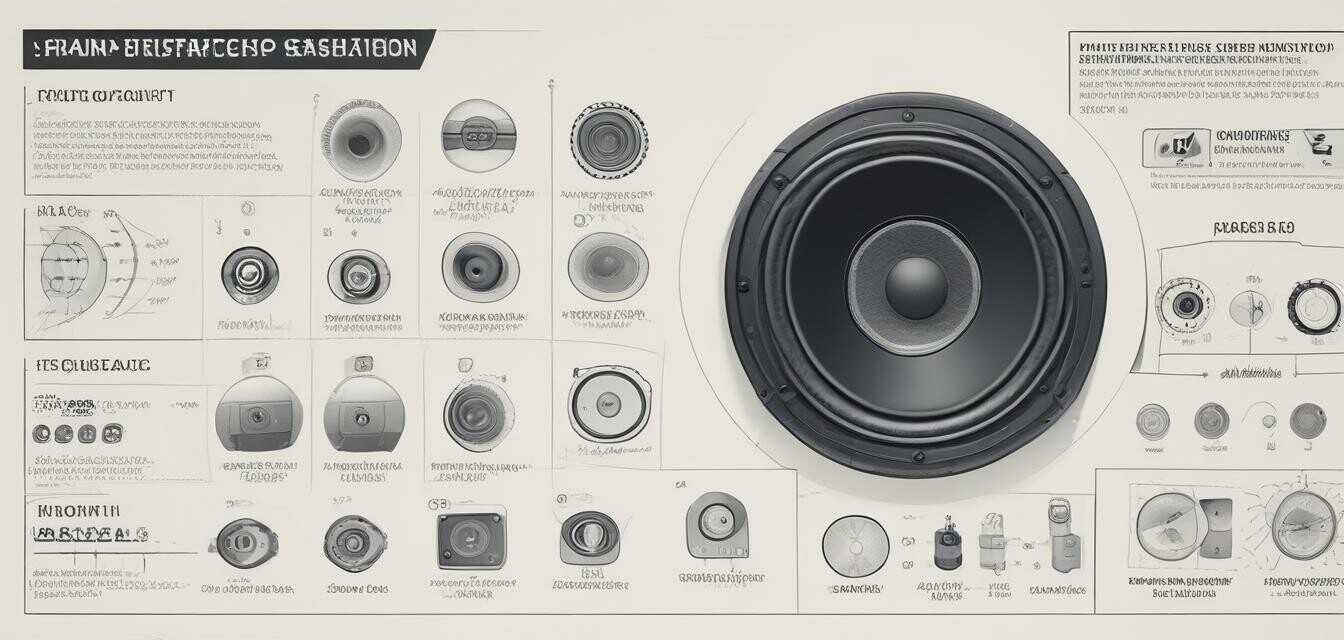
Understanding Speaker Specs: A Beginner's Guide
Key Takeaways
- Speaker specs can be overwhelming but are essential for a good sound experience.
- Key specifications include wattage, frequency response, impedance, and sensitivity.
- Understanding these specs helps you choose the right speakers for your needs.
- Consider your space and usage for optimal speaker performance.
- Always read customer reviews for real-world insights on speaker performance.
When it comes to selecting the perfect speakers for your home, understanding speaker specifications can make all the difference. With a myriad of technical terms and numbers, it’s easy to feel overwhelmed. However, knowing what these specifications mean can greatly enhance your sound experience, leading to informed purchasing decisions. This guide will break down important speaker specifications in a simple manner, ensuring you grasp what they truly mean for your listening pleasure.
Key speaker specifications explained
| Specification | Definition | Importance |
|---|---|---|
| Wattage | The amount of power the speaker can handle. | Higher wattage can mean louder sound without distortion. |
| Frequency Response | The range of frequencies the speaker can reproduce, measured in Hertz (Hz). | A wider range allows for better audio detail. |
| Impedance | The resistance a speaker presents to the amplifier, measured in ohms. | Matching impedance ensures optimal power transfer. |
| Sensitivity | How efficiently a speaker converts power into sound, measured in decibels (dB). | Higher sensitivity means louder sound with less power. |
Wattage: Understanding power levels
Wattage is often cited as one of the most vital specs to consider when purchasing speakers. It tells you how much power the speaker can handle. Generally, a higher wattage indicates that the speaker can play louder without distorting the sound. Here are a few key points to keep in mind:
- Consider your listening environment. Larger rooms may require speakers with higher wattage.
- If you enjoy playing music at high volumes, prioritize speakers with higher wattage ratings.
Frequency Response: The sound spectrum
Frequency response is another key specification. It is measured in Hertz (Hz) and indicates the range of low to high frequencies the speaker can reproduce. A typical range for home speakers is between 20 Hz to 20,000 Hz (20 kHz), which covers the full spectrum of human hearing.
- Lower frequencies (20-250 Hz) contribute to the bass sounds.
- Higher frequencies (2,000-20,000 Hz) are responsible for treble sounds.
A good speaker should have a flat frequency response, meaning it produces sound evenly across all frequencies. This ensures a balanced sound experience, whether you are listening to classical music or the latest pop hits.
Impedance: Finding the right match
Impedance measures the resistance offered by the speaker to the current flowing through it, typically represented in ohms. The most common impedance ratings are 4, 6, and 8 ohms.
- Make sure to match the speaker's impedance with your amplifier or receiver for optimal performance.
- A mismatch can lead to inefficient sound or damage to the equipment.
When selecting speakers, if you're utilizing a home theater system, it's often best to consult the receiver's specifications in tandem with the speaker specs.
Sensitivity: Sound efficiency
Sensitivity reflects how efficiently a speaker converts power into sound. It's measured in decibels (dB) and indicates how loud the speaker will be with a given amount of power. For example, a speaker with a sensitivity of 90 dB will be much louder than one with 85 dB at the same wattage.
- Higher sensitivity ratings are beneficial for smaller spaces.
- Speakers with lower sensitivity ratings require more power to achieve the same volume.
Choosing the right speakers for your needs
Understanding these specifications is essential for selecting the right speakers for your unique needs. Here are some considerations when making your choice:
- What will you use the speakers for? Consider whether they will be used for music, movies, or gaming.
- What is the size of your space? Larger areas may require more powerful speakers.
- What type of sound do you prefer? Do you enjoy deep bass or crystal-clear highs?
Final thoughts: Read reviews
Once you have a grasp on speaker specifications, don’t forget the importance of real-world user reviews. These can provide valuable insights into how a particular model performs in various environments and settings. Check our categories for various speaker types and read through our detailed listings in the following:
Conclusion
Understanding speaker specifications is key to enhancing your listening experience. From wattage to sensitivity, this knowledge will empower you to make informed decisions when purchasing speakers. Take your time to research and consider your needs, as the right speakers can bring your audio experience to life.